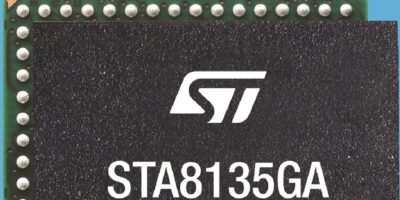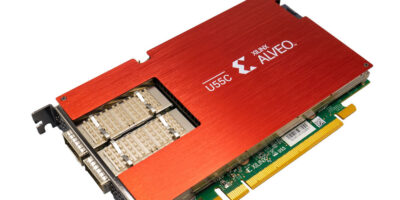Believed to be the first automotive-qualified single-chip GNSS (Global Navigation Satellite System) receiver to integrate triple-band positioning measurement engine, the STA8135GA has been developed by STMicroelectronics. It has a performance comparable to the highest-accuracy surveying / mapping instruments, says the company and delivers high-quality position data for advanced driving systems.
The IC is the latest member of the company’s Teseo V family. In addition to the integrated triple-band positioning measurement engine on-chip, it also has standard multi-band position-velocity-time (PVT) and dead-reckoning.
Triple band has historically been used in professional applications such as surveying, mapping, and precision agriculture that demand millimeter accuracy with minimal reliance on correction data. Until now, this was only available in chipsets or modules, which are typically larger and more expensive than this single-chip device, says ST. The triple-band enables the receiver to efficiently acquire and track the largest number of satellites in multiple constellations simultaneously for performance in difficult conditions such as in urban canyons and under tree cover.
The STA8135GA also integrates separate low-dropout (LDO) voltage regulators on-chip to supply the IC’s analogue circuitry, digital core, and I/O transceivers which simplifies the external power supply. The receiver can track satellites in GPS, Glonass, BeiDou, Galileo, QZSS, and NAVIC / IRNSS constellations.
The STA8135GA helps driver-assistance systems to make decisions using the multi-constellation receiver to deliver raw information for the host system to run any precise-positioning algorithm, such as PPP / RTK (precise point positioning / real-time kinematic). The STA8135GA also enhances the performance of in-dash navigation systems, telematics equipment, smart antennas, and V2X communication systems, as well as marine navigation systems, drones, and other vehicles.
According to Luca Celant, general manager, ADAS, ASIC and Audio Division, Automotive and Discrete Group, STMicroelectronics: “The high precision and single-chip integration . . . . enables the creation of reliable and affordable navigation systems that enable vehicles to be safer and more context aware”. The in-house design resources and processes for high-yield manufacturing are credited with making this industry-first possible, he added.
The STA8135GA is housed in a 7.0 x 11 x 1.2mm QFN package. Samples are available now and full qualification AEC-Q100 and start of production is scheduled for Q1 2022.







